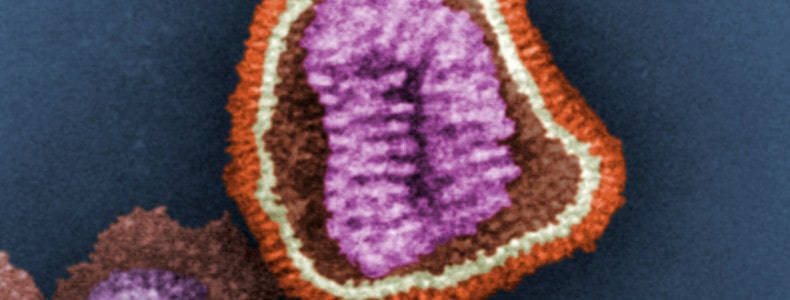
Last winter, the major health challenge for health services in the northern hemisphere was containing the threat of Covid-19. This time, the challenge may well be containing Covid and influenza.
Last year ‘flu season – which usually runs for around eight to 10 weeks between September and March – was notably mild, in part because Covid-mandated shielding and social distancing measures helped prevent other viruses from spreading.
Although the impact of ‘flu varies naturally each year, 2020/1 saw “extremely low” levels across the world – with UK hospital and intensive care admissions below baseline throughout, and much reduced from previous years.
This coming winter, health bodies such as the UK Health Security Agency (UKHSA) fear that the lifting of restrictions means “more of the population may be susceptible to ’flu”. And, with Covid-19 still circulating, concern is also growing about vulnerable individuals catching both influenza and Covid – with potentially deadly results.
UKHSA says that last year, people who caught ’flu and Covid at the same time were almost six times more likely to die than someone without either virus, and more than twice as likely to die as someone with Covid alone – meaning that “Cocirculation of these viruses could have a significant impact on morbidity, mortality and health service demand” in 2021/2.
Whilst ‘flu vaccination is the main defence against catching influenza, the prospects of those who are taken ill may depend in large part on rapid and accurate laboratory testing – so that patients can be given the right treatment, as quickly as possible.
And this year, rapid and accurate molecular assays will not just be vital in the fight against influenza, but also key to distinguishing it quickly and efficiently from SARs-CoV-2.

Using reference-grade Influenza A H1N1 Influenza B, Human coronavirus 229E and OC43 genome strains that are now available from ATCC’s Genome Portal, Chinese researchers validated seven commercially available SARS-CoV-2 test kits, proving that they do not cross react with commonly circulating respiratory pathogens.
ATCC’s role in combating Covid-19 is just part of its ongoing commitment to better global health via the Genome Portal – our free-to-access database of more than 1,500 publicly-available bacteria, virus and other genomes and supporting metadata, matched to authenticated ATCC strains. It means ATCC can offer a wide range of respiratory pathogens to increase the specificity and sensitivity of molecular assays.
State-of-the-art quality control techniques employed by ATCC Genome Portal scientists use a hybrid assembly method that leverages highly accurate Illumina short-reads with the scaffolding ability of ultra-long Oxford Nanopore reads - generating a genome assembly more complete and accurate than could be possible with each individual technology.
ATCC provides scientists with the biomaterials, services and standards that move their research forward - and their Genome Portal makes it easy to access and analyse high-quality whole-genome sequencing data. Click here now to sign up free.
